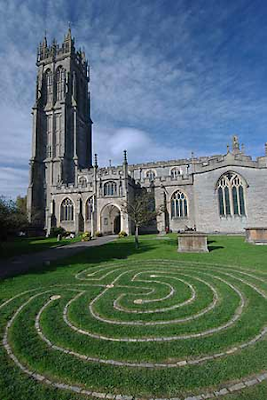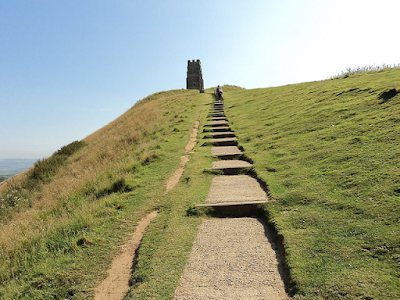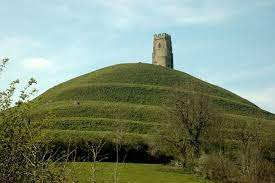How Prevalent Was Goddess Worship In France?
Goddess has survived in quiet confidence, even though she was sometimes hidden, despite the rigors of patriarchy and the suffering of the Inquisition, which devastated many of those women and men who lived near to Goddess and her gifts of the land, animals, and the seasons
The holy geometry of architecture and stained glass, which were made by the sweat and tenacity of people who revered her, incorporates the essence of the Divine Feminine
Given that both Isis and Artemis of the Ephesians were referred to as "Our Lady," Gothic architecture and symbolism in the multitude of cathedrals that sprung up in the Middle Ages are devoted the Goddess in the guise of "Our Lady," the Virgin Mary, thus Notre Dame
Some people think Gothic cathedrals' almond-shaped lancet windows and arches, which mirror female genitalia, depict the exact qualities of female anatomy
Common images on stained glass windows with symbolism based in Goddess worship include roses, bees, and wheat
The congregation was often thought of as the Bride of Christ, and the Church itself was frequently described in feminine terms
The majority of what has been written about the Jesus of Gnostic scriptures, a proponent of the feminine and thought by many to be descended from consorts of the Goddess, would be impossible for him to recognize, much alone the Kingdom he proclaimed
The natural feminine principle persisted in the metaphorical underworld, hidden beneath the veil of the Black Madonna, and in the persona of the Virgin Mary since patriarchal faiths were unable to eradicate the people's love and yearning for it or the love and stability the Goddess offered
She may also be seen in locations in France's countryside that are linked to Mary Magdalene
The reawakened herstory is fairly obvious when seen through the lens of our pilgrimage to holy places
What Are Signs Of The Divine Feminine At Chartres?
The Chartres Cathedral has a wide range of elements and ideas that personify the Feminine Divine unlike any other single building
The location of the existing cathedral, which is devoted to the Virgin Mary, has long been revered by the Earth Mother
Druids, originally known by the name Carnute, are said to have worshiped here in the sacred grove, honing their esoteric abilities at the holy spring while being in close proximity to nature
According to legend, the indigenous tribes worshiped a goddess whose representation showed her giving birth
The place was later selected as the location for a large Christian edifice, as was the case with so many important pagan sites
Here, construction on a Romanesque cathedral began in 1020 but was abandoned when it was damaged by fire in 1194
Only the west front, south tower, and crypt were left of this building
Curiously, the Veil of the Virgin was the only part of the precious artifacts kept in this magnificent cathedral that had survived
The old church was quickly replaced with a Gothic cathedral, which was finished in in 25 years, in 1250 CE
The worshippers of the Goddess at Chartres simply started referring to her as the Virgin Mary after realizing that she was one and the same person
According to writers Anneli Rufus and Kristan Lawson, Catholic authorities came up with the phrase "prefigurations of the Virgin" to describe representations of Mary made before her birth
This is another another way in which Mary and the Goddess are assimilated
The tremendous appeal of Chartres, often referred to be the greatest of the French Gothic cathedrals, communicates to the devout who have always been attracted here
It is well known that renowned scholar and mythologist Joseph Campbell reflected on the profound effect this hallowed spot had on his psyche
A Black Virgin, the garment of the Virgin Mary, the aforementioned holy well, the labyrinth on the floor, sacred geometry, feminine architecture, and the well-known rose stained glass windows are just a few examples of the extensive array of Goddess images found there
The substantial subterranean crypt is a portion of the old pagan shrine that was on the location from the beginning and extends from below the building up
Two galleries that run side by side and Saint Lubin's vault, which dates to the ninth century, are included in the biggest crypt in France
Directly below the church nave is where the original figure of the Mother Goddess giving birth, now known as Our Lady Underground or Notre Dame de Sous-terre, may be found
The duplicate that now stands in the crypt in place of the original statue, which is said to have been destroyed during the French Revolution
She is categorized as a Black Madonna since she was carved in the Romanesque style from dark brown wood
Another of her nicknames is Our Lady of the Crypt, and she is set onto the altar of that chapel
The crypt is open for tours, but unlike in Malta, don't anticipate the guides to concentrate on the pagan origins of the well or statue
As one moves farther inside the cathedral, they come to the second Black Virgin, Notre Dame de Pilier, whose name may relate to either the 10-foot (3-m) pillar she stands on or the pillar that formerly stood in the Temple of Solomon in Jerusalem
She is only one of several Black Madonnas or Black Virgins that may be seen all across Europe
(Notable Black Madonnas may also be found at Montserrat, Spain, and LePuy, France.) Because the Madonna and Child statues depict continuity between the pagan Goddess and the Virgin Mary, as well as how the Goddess persisted in peoples' public and spiritual life via Mary, these symbols are crucial to goddess spirituality
Like the aforementioned early tribes, Mary and the Goddess are identical in the eyes of many Goddess supporters
A further layer of assimilation between the symbolism of the enthroned Egyptian Goddess Isis holding her son Horus in her lap similarly to how Mary carries the infant Christ is the acceptance by many that Jesus is the son of the Goddess
Jesus, who has been referred to as the son of Sophia, is readily integrated into the image of Horus
The name of Isis has been discovered to remain on several of these Black Virgins' painted surfaces
It's important for readers to keep in mind that Mary, Cybele, and Isis were all referred to as "Queen of Heaven" and had their sons via non-natural methods
When church authorities are questioned about the Black Madonna's black complexion, they sometimes offer the ludicrous claim that the sculptures are dark because of candle smoke soot, never acknowledging any connection to the Goddess
As subsequent site entries in this book will demonstrate, several of these monuments just "appeared" to farmers and fishermen in a magical way
Some claim that these sculptures with black complexion were brought back by Crusader warriors
There are several theories about the blackness of her complexion, with some academics suggesting that the Black and Brown Madonnas came from Africa or were related to the darker-skinned Isis and Artemis
Goddess Spirituality practitioners often use her blackness as a metaphor for the Goddess' identity being "veiled" beneath Mary's persona
Some believe that her blackness is a metaphor for the Gnosticism and alchemy she embodied, or for the unfathomable depths of Wisdom or Sophia, the dark, unknowable "knowing." When describing Chartres, scholar Margaret Starbird says that it developed into a "center of enlightenment, the center of a worship of Maria-Sophia, a goddess of knowledge." Her chthonic powers of regeneration may perhaps be linked with her blackness
Her darkness is also connected to the Grail and Mary Magdalene legends that have become part of popular culture
Whatever the particular causes of her darkness—and there were undoubtedly many—there was a rise of interest in and adoration for the Feminine, which explains why there were so many Madonnas and Cathedrals built throughout the Middle Ages
As pilgrimages to these representations of the Divine Feminine gained popularity, great craftsmen like the Templars and Freemasons focused on creating cathedrals in her honor that incorporated holy geometry into their architecture
One of these components is the spire, which has ties to the sun and moon and harmoniously unites the masculine and feminine
Sacred geometry often included this cosmological link, attributing a divine balance and harmony, not to mention the order of the celestial bodies
The design and building of Chartres, according to Starbird, were carried out by the Knights of the Temple, also known as the Knights Templar, who sought to reinstate the feminine element in medieval society
The Templars "had access to the exoteric learning of the ancient world," according to the author, "perhaps preserved in Islamic literature that members of the order met in the Middle East." Their understanding of mathematics and engineering gave rise to the Gothic architectural style, which quickly expanded over Europe between 1130 and 1250 as if on purpose
According to her, the guild that constructed Chartres was known as the Children of Solomon, which is a clear allusion to the King of Jerusalem who is believed to have penned the Song of Solomon, which serves as a metaphor for the "holy marriage." She shares an intriguing story about medieval Gypsies who thought the Notre Dame buildings in northern France were built to resemble the constellation Virgo in reverse
Prior to the Inquisition, cathedral architecture and popular culture were thriving centers for the ancient arts and sciences of astrology, alchemy, mysticism, and psychology
The images of the Virgin in stained glass, such as the rose windows connected to Mary Magdalene and the Grail stories, are imagery in which the Feminine dwells inside Chartres
Some people think that Chartres' lancet windows symbolize the feminine vulva, the womb of conception and regeneration
Thousands of pilgrims from the Middle Ages visited this location to venerate the garment and girdle that are believed to be those of the Virgin Mary
Elinor Gadon claims that Mary was dressed in the tunic when Gabriel informed her that she would become the mother of God, and that the girdle fell from her body when she was taken up into heaven during the Assumption
The 11-circuit labyrinth engraved on the church floor is the last component of Chartres to be discussed, despite the abundance of Mary-related artworks throughout the building
It is claimed to be the same size as the aforementioned rose window and is 42 feet (13 m) wide
While labyrinths were a common feature of medieval churches, this one is said to have a brass plaque at its center that features images of Theseus, the Minotaur, and Ariadne, all of whom are connected to Goddess legend from Minoan Crete (some interpret Ariadne guiding Theseus out of the labyrinth as a metaphor for rebirth)
The term labrys, which refers to the Minoan people of Crete's holy double-sided ax, is closely related to the word labyrinth, which means "House of the Double Ax." The contemplative trip within is made even longer by the presence of four seven-circuit labyrinths
The Church believed that this labyrinth either symbolized the Way of the Cross or a pilgrim's trip to Jerusalem and returned
Each individual pilgrim was obliged to walk this road on their knees, which was often used as penance
Labyrinths, which resemble swastikas in shape, have pre-Christian origins and could represent an inward journey or a return to rebirth
It might be compared to the Native American kiva's symbolic significance
There is just one path in and out of a labyrinth, unlike a maze, making it impossible to get lost
It also represents a person's trip into the afterlife, where they could have a divine encounter
It is a technique for meditation that aids in centering the mind
The spiral-shaped labyrinth sign is similar to spirals seen on the Neolithic sites of Newgrange and Malta, which represent the ideas of death and rebirth
Labyrinth walkers' "in-and-out" movements have been transformed into spiral dances, which devotees of Goddess Spirituality often include into ceremonies and celebrations (See Glastonbury, page 39)
It's interesting to note that the labyrinth is said to have indicated the entrance to Cumae's Sybil, an oracle comparable to that of Delphi and Didyma
This was a gateway to the underworld in paganism, but in the Christian setting, it was transformed into the entrance to hell
How to go to Chartres?
The famed Palace of Versailles is 20 miles (35 km) from the city of Chartres, which is located around 60 miles (97 km) southwest of Paris
If you have never been to a place as quaint as Chartres, the author suggests exploring the town after seeing the Cathedral since it is a modest and beautiful place overall
Paris, which is roughly an hour away by rail or bus, is where most visitors to Chartres arrive
The cathedral is prominent and simple to locate in the town's historical district
The railway station may be reached by foot from there with ease
What Is The Mary Magdalene Legacy In France?
Mary Magdalene has been a subject of debate for thousands of years, and people are still whispering about her today
However, some scholars are still reluctant to accept the evidence found in the recently discovered Nag Nammadi Gnostic gospels from the second century CE, which were likely omitted from the Bible for both doctrinal and political reasons
Many people are becoming aware of Mary's historical setting and how the account of her friendship with Jesus has been changed
Scholars like Karen King think it's quite likely that Jesus and Mary were married, and novelist Margaret Starbird goes even farther, arguing that the Holy Grail was Mary Magdalene's growing womb, which gave birth to the lineal descendant of Jesus in France after his death
The Church, as well as organizations like the Knights Templar and the Cathars, may have had a part in herstory, according to tantalizing and contentious evidence that has just come to light
It also suggests that Mary and Jesus and the lineage of Christ may have had hidden links
Those who hold these unconventional viewpoints are turning locations in France where the pregnant Mary is said to have fled after the crucifixion of Jesus into modern-day Mary Magdalene pilgrimage destinations
Goddess supporters see her as more than simply Jesus' wife; they see her as the holy sexuality that is sorely lacking in the patriarchal Judeo-Christian society
These locations in Provence, close to Aix-en-Provence, including Saint Maximin and Saint Vezelay
Mary and Lazarus came at Marseilles, where they reportedly started to evangelize southern Gaul
Some people think she gave birth to a daughter at this time
She was supposedly taken by angels to Aix and the Saint Maximinus oratory there when she passed away
The first time these artifacts are recorded is in 745 by the chronicler Sigebert, who records that they were relocated to Vezelay to be safe from Muslim invasion
Charles II, King of Naples, built a monastery in the location of the former Saint Maximinus in 1279, naming it "Saint Baum." While building it, he stumbled across this Mary Magdalene martyrium and the shrine dedicated to her, as well as an inscription explaining why it had been kept a secret
After being destroyed during the French Revolution, the church was rebuilt in 1814
The "real relic" of Magdalene, including her skull, is said to be in the possession of the former Saint Maximin (now formally known as "Saint Maximin-la-ste-Baume"), which is celebrated on July 22
Her skull is housed in a reliquary made of brass and gilded that dates to circa 1860
Saint Baum is a vast monastery with a central courtyard that is surrounded by rolling hills and vineyards
It also has a beautiful basilica with a Gothic apse from the fourteenth century
The basilica is built atop an old tomb that served as the burial chamber for a Roman villa that originally stood on the spot
This is the cave where, according to many, Mary spent her last hours before being buried beside Saint Maximin, the first bishop of Aix
The Magdalene's genuine remains were kept at the enormous church in Vezelay, which is halfway between Paris and Lyons, until they were transferred to Saint Maximin
The enigmatic sites of Rennes le Chateau and Saintes Maries de la Mer in southern France are on the pilgrimage route, as are the Church of La Madeleine in Paris with its exquisite depiction of Mary being carried up to heaven by angels
According to the Eastern Church, Mary Magdalene traveled to Ephesus with the Apostle John and Mary, the mother of Jesus, and died there
Leo the Wise subsequently sent Mary Magdalene's remains to Constantinople in 889
Gregory of Tours, a renowned historian of the Franks who lived from 538 to 94 CE, agreed that Mary Magdalene passed away at Ephesus
Pope Gregory the Great purposefully connected the biblical character Mary Magdalene with an unidentified prostitute in 591 CE, maybe as a political ploy to undermine female leadership within the Church, which saw intimate relationships as corrupting
The Vatican didn't make the necessary correction for 1,378 years, but it did it in 1969
Important facts, such as Mary's role and those of other early Church women leaders, had been overshadowed in the meantime
The greatest of saints, a significant Apostle to whom Jesus first appeared after his resurrection, and maybe even his wife, Mary Magdalene, has been dubbed
The following two quotations should be taken into consideration as food for thought, even if some experts refuse to acknowledge Mary Magdalene's existence and others question the validity of the evidence supporting this claim that Mary was Christ's wife
When author Karen King, a graduate of both Harvard and Claremont Graduate University, says, "Sometimes religion is presented as being fixed or stable and we must accept it or reject it, but the fact is, religious traditions and certainly Christianity among them, are very diverse and filled with possibilities," she is serving as a reminder to readers of an important truth
We must be accountable for the sort of religion we create because religion is flexible
May we all maintain an open heart and mind.































